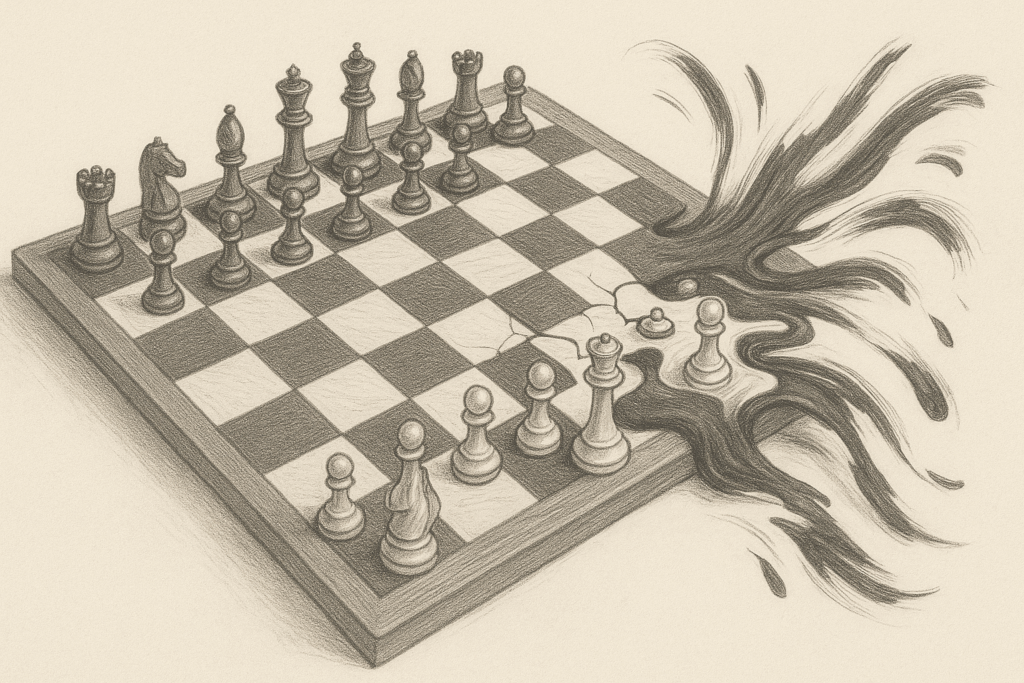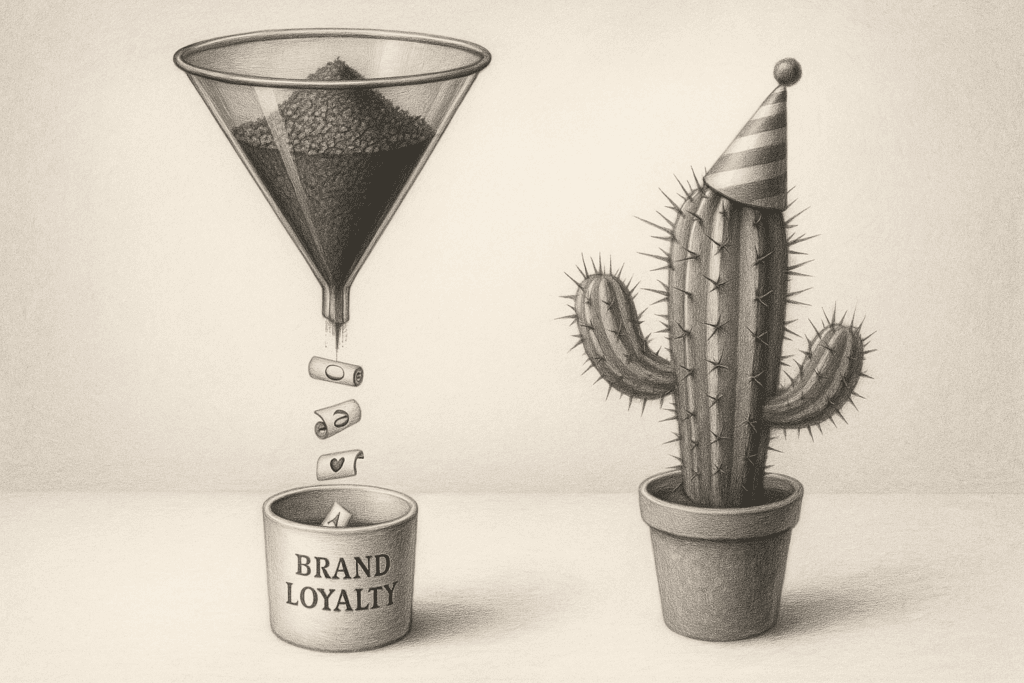Nearly everyone I work with admits the same thing: they don’t really understand what branding is. When I explain it, something clicks. They lean in, fascinated. “Why didn’t anyone tell me this before?”
Here’s what makes branding so confusing: it feels ephemeral, almost impossible to measure. Yet it has massive impact on revenue, profit margins, and whether a business thrives or merely survives. How do you reconcile something so intangible with something so financially critical?
The answer lies in understanding branding basics. These are simple truths that a second grader could grasp.
What are the basics of branding?
Branding is about knowing who you are, what you stand for, and acting consistently. It shapes customer impressions through every interaction, not just design. Strong branding builds emotional connection, trust, and long-term business value.
What Is Branding and Why Does It Matter?
Think of branding this way: if your business were a person, branding would be its character. It goes beyond appearance or words to capture who it is at its core.
A brand is the sum of every promise you make and every promise you keep. It’s what people remember about you when you’re not in the room. Most importantly, it’s what makes someone choose you over someone else, even when that someone else costs less.
The digital age hasn’t changed these fundamentals. What’s changed is that customers can now verify whether your promises match your practices in seconds. They can share that discovery with thousands just as quickly.
Why Branding Is Crucial for Business Success

Let me share what I’ve observed over twenty years in this field: companies with strong brands charge premium prices and still win customers. Companies with weak brands compete on price and still lose.
This isn’t magic. It’s trust converted into financial performance. When customers trust your brand, they pay more, stay longer, and tell others. The impact shows up everywhere in your pricing power, customer acquisition costs, and lifetime value.
Consider this: a strong brand can command price premiums up to twice those of weaker competitors while maintaining market share. That’s pure margin. That’s the difference between thriving and surviving.
What’s the Difference Between Branding and Marketing?
Here’s where people get tangled up. Marketing tells your story. Branding is your story.
Marketing might change with campaigns, seasons, or trends. Your brand, your core identity, remains constant. Marketing asks, “How do we sell this?” Branding asks, “Who are we, and why should anyone care?”
I often explain it this way: marketing gets someone to go on a first date with you. Branding is what makes them want a second date, a third, a relationship. Marketing opens doors. Branding builds homes.
What Are the Essential Basics of Branding?
After two decades of helping businesses understand their brands, I’ve found these fundamentals never change:
1. Start With Truth: Build a Brand on Who You Really Are
You can’t fake authenticity anymore. Your brand must reflect who you actually are, not who you wish you were. This sounds simple until you’re sitting in a room where leadership wants to be seen as innovative while every internal process screams risk-averse.
The businesses that succeed are brave enough to acknowledge their real identity and build from there.
2. Why Brand Consistency Builds Customer Trust
Every interaction either builds or erodes trust. The invoice email. The customer service chat. How your website loads on mobile. These aren’t random touchpoints. They’re proof points.
When these align, something powerful happens. Customers stop thinking about whether to trust you. They just do. That trust translates directly to revenue.
3. How Emotion Influences Buying Decisions
People think they make rational purchasing decisions. They don’t. They make emotional decisions and rationalize them later.
Your brand’s job is to create an emotional connection strong enough to override spreadsheet logic. When someone pays more for your product despite cheaper alternatives, emotion won that argument.
4. Why Branding Is a Long-Term Investment
Here’s what frustrates executives: branding doesn’t work on quarterly timelines. It compounds like interest, slowly at first, then suddenly.
The work you do today might not show results for months or years. But when it does, it creates what Warren Buffett calls a “moat,” a sustainable competitive advantage that’s nearly impossible to replicate quickly.
Do Branding Principles Apply to Small Businesses?

Small business owners sometimes think they can’t afford to think about branding. The truth is they can’t afford not to.
The principles remain identical whether you’re a solo entrepreneur or a Fortune 500 company. You need clarity about who you are and consistency in expressing it. The scale differs. The fundamentals don’t.
In fact, small businesses often have an advantage: they can be more authentic, more nimble, more human. They can build emotional connections faster because there are fewer layers between them and their customers.
How Does Branding Impact Revenue and Profit?
Let’s talk numbers, because ultimately, business is about sustainable success.
Strong brands see:
- Higher price realization (those 2x premiums I mentioned)
- Lower customer acquisition costs (word-of-mouth does the heavy lifting)
- Higher customer lifetime value (loyalty translates to repeat purchases)
- Better employee retention (people want to work for brands they believe in)
- Increased enterprise value (brands are assets that multiply sale prices)
Weak brands see the opposite: price pressure, expensive customer churn, recruitment challenges, and diminished sale values.
What Questions Reveal Your True Brand?
When I work with leaders to clarify their brand, we start with deceptively simple questions:
- What do you believe that your competitors don’t?
- What would you never do, even if it meant losing business?
- What makes you proud to come to work?
- What change are you trying to create in the world?
The answers reveal your brand’s true nature. The real one, beyond any polish or pretense.
How Do You Start Building Your Brand?
Start with radical honesty about who you are today. Your reality, not your aspirations. Then identify the gap between current reality and where you want to be.
Build your bridge deliberately:
- Step 1: Define Your Brand’s Core Values
- Step 2: Align Business Decisions With Brand Values
- Step 3: Communicate Your Brand Consistently
- Step 4: Measure Emotional Impact, Not Just Sales
- Step 5: Focus on Long-Term Brand Building
Remember: every business has a brand whether they manage it or not. The question is whether you’re intentionally building an asset or accidentally creating a liability.
Final Thoughts: Why Branding Basics Matter Most

Branding isn’t mysterious. It’s the disciplined practice of being who you say you are, consistently, until trust becomes automatic and preference becomes habit.
In a world where customers can verify your claims instantly and share their experiences widely, authentic branding has become essential for survival.
The fundamentals haven’t changed because human nature hasn’t changed. We still buy from people and companies we trust. We still choose emotional connection over logical arguments. We still remember how something made us feel long after we’ve forgotten what it cost.
That’s why branding matters. That’s why it drives revenue. That’s why understanding these basics is essential, not optional.
Amy is a brand strategist with over twenty years of experience helping leaders understand how clarity and consistency transform business performance. She has guided dozens of organizations through the critical work of aligning brand promise with practice, revealing how authentic branding drives sustainable revenue growth. Amy writes about the intersection of brand strategy, business value, and the courage required to build something that matters.
Branding 101: Common Questions Answered
Branding is self-awareness applied to business: knowing who you are, what you stand for, and acting accordingly. It’s every action a company takes, expressed through consistent communication and behavior, not just logos or design.
Branding builds like trust in any relationship, brick by brick, day by day. The work you put in today might not pay off for years because you’re creating emotional connections and memories that accumulate over time.
While marketing sells, branding builds the foundation that makes selling easier. Branding lives at the strategic level: it’s the soul of your business expressed through every decision, policy, and interaction. Marketing is one function; branding cuts across all functions.
Consistency is how brands become recognizable and trustworthy. Like training through repetition, branding requires saying what you mean and meaning what you say—over and over—through design, voice, policies, and customer service.
The fundamentals of branding remain the same whether you’re a solo entrepreneur or a large corporation. Both require clarity of purpose and consistency of execution. The scale differs, but the core principle, self-awareness translated into action, doesn’t change.
